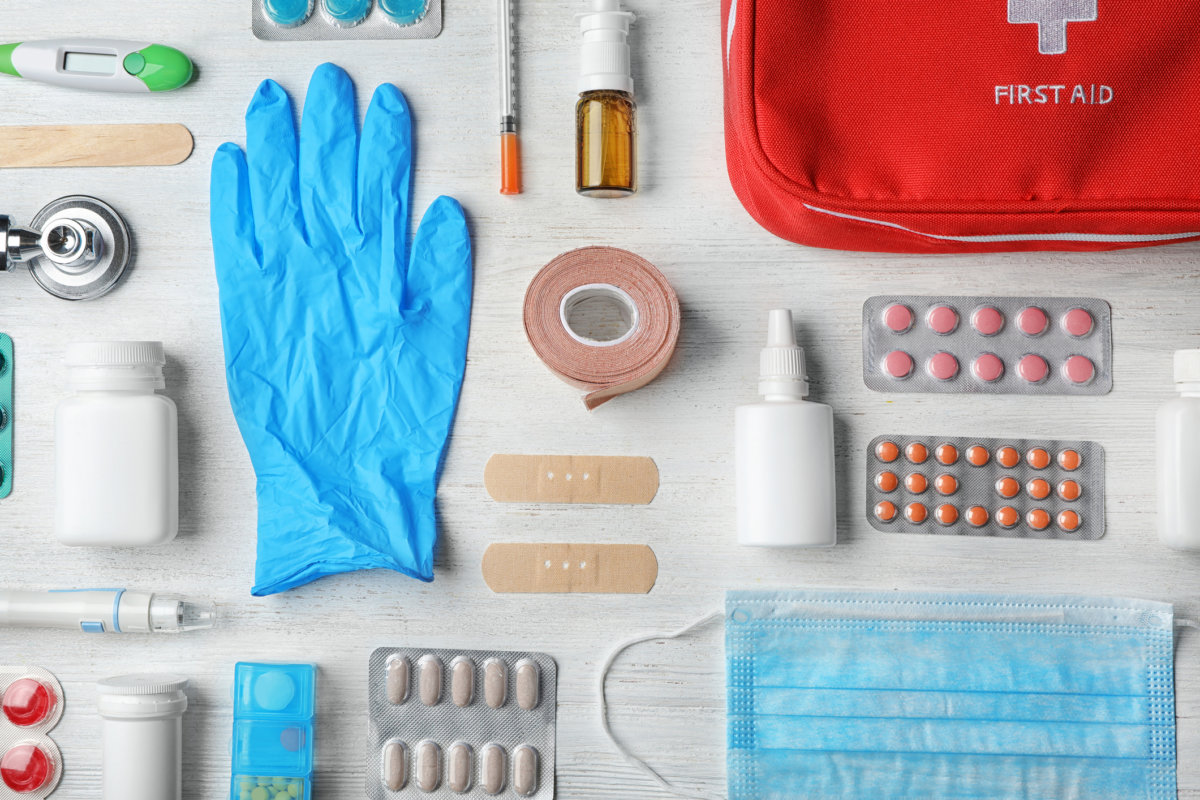Make Your Own First Aid Kit

February 2020
Many of us fill our apartments with extra cleaning supplies, pantry items and back up toiletries like soap and contact cleanser. What about supplies for a first aid kit in preparation of minor emergencies? A well-stocked first aid kit can help you respond quickly and effectively to common injuries, especially when an urgent need for an adhesive bandage or ice pack arises. While you can purchase one, creating your own allows you to customize everything to better fit your needs.
Assuming you’re taking the DIY approach, get started with a small, sectioned case with a snap-lock for your homemade first aid kit. Something like a tool box or fishing tackle box works great. Automotive, sporting goods and household aisles in some stores may carry them, or they can be ordered online. With box in hand, here are some essential items to store in your kit and tips to help you save money and prepare for anything.
Minor Wound Dressing
These items fall under the “if I accidentally burn myself while cooking or trip over an area rug and scuff my knee” preparations. Things like gauze, assorted band-aids, adhesive tape, bandage strips, antibiotic ointments, and antiseptic cleansers round out this category.
Pain Relievers
Pain relievers come in gel, lotion, and patches options and can be used for headaches and to reduce swelling — check discount stores for generic brands. For items like pain relievers, it’s important to periodically check expiration dates and replace any out-of-date contents.
Protective Gloves
Non-latex gloves are helpful in keeping wounds clean and in preventing the spread of germs. Many times, these come in multi-packs.
Thermometer
A thermometer will take the guess work out of determining if you or someone in your apartment has a fever. Some digital versions even come with disposable plastic sleeves, which is great if there’s more than one person who needs their temperature taken a time.
Applicators and Tweezers
Everyday items like cotton balls and ear swabs are great to add – plus, they double us as back up toiletries. Tweezers can assist in splinter removal and small scissors for cutting bandages and gauze to the right length. Most if not all of these items can be found in the beauty aisle at a local store.
Reusable Ice Packs
Reusable ice packs, which can be stored in the freezer, are a must. They should be your go-to to reduce swelling from bumps and twists. If you don’t have room in your freezer, try non-toxic instant cold packs. They’re easy to use: Snap the seal inside or squeeze the pack and they get cold in an instant.
Your Personal Picks
What health issues do you that might warrant including items not found in a store-bought first aid kit? For example, someone who suffers from low blood sugar might include a juice box or package of raisins. Give thought to any personal potential emergency needs you could have and include those items.
